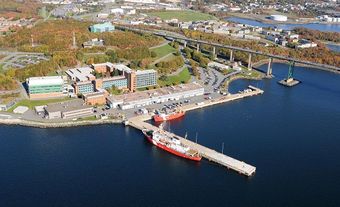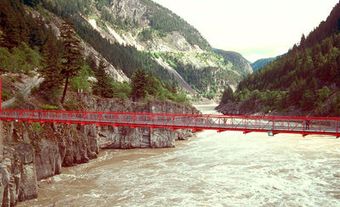Conserver Society
"Canadians as individuals, and their governments, institutions and industries [must] begin the transition from a consumer society preoccupied with resource exploitation to a conserver society engaged in more constructive endeavours." This statement, which includes the first use of the phrase "conserver society," appeared in the SCIENCE COUNCIL OF CANADA report Natural Resource Policy Issues in Canada (1973). It was intended to suggest that many environmental problems are symptoms of the larger problems of a society dedicated to turning resources into garbage as fast as possible in the interests of short-term economic growth; it suggested as well that most environmental problems cannot be resolved until the basic causes are corrected.
The Canadian press gave unanticipated attention to the conserver-society recommendation when the report was released. Public attention and interest led to a series of studies sponsored by the federal government and others. The use of the term also spread to the US, Australia and New Zealand. The term has since been replaced with "sustainable development" which arose out of the Brundtland Commission (1987) and was endorsed by the United Nations Conference on Environment and Development held in Rio de Janeiro, Brazil in 1992. The 2 concepts are very similar. They refer to ideals such as democracy, justice and freedom that guide the development of specific plans and programs, rather than to detailed prescriptions or regulations.
Principles
According to the Science Council's brief definition, a conserver society would use 5 principal policy thrusts in making decisions affecting the ENVIRONMENT or its RESOURCES: concern for the future; economy of design; diversity, flexibility and responsibility; recognition of total costs; and respect for the biosphere and its capabilities. Ideas included in the concept have been expressed as "doing more with less,""living within the limits to growth,""using technology appropriate to the cultural context and resource base," etc.
A conserver society would introduce social and environmental concerns at the very beginning of the design, planning and policy formulation processes and would make resource CONSERVATION and environmental and SOCIAL IMPACT ASSESSMENTS integral components of all projects. In an advanced conserver society, ENVIRONMENTAL LAW would diminish in importance as sound environmental planning and resource conservation became routine.
There have been a few significant government actions directed at bringing about a conserver society, but Canadians still consume more energy, and North Americans produce more garbage per capita, than any other society. However, some progress has been made such as improvements in environmental education; establishment of environmental legislation (eg, requirements for ENVIRONMENTAL IMPACT ASSESSMENTS); increase in skills and knowledge in such areas as environmental and RESOURCE MANAGEMENT; decreases in the importance given MEGAPROJECTS; changes in corporate attitudes; a relative decline in confrontation and increase in co-operation on environmental issues; and continuing development of the cultural foundations needed to make judgements about environmental issues.
The United Nations-sponsored landmark Brundtland Commission emphasized the close relationship between a prosperous economy and a healthy environment, calling for nations to embark on policies of sustainable development, development which sustains rather than depletes the finite resources of Earth.
Challenges
A major difficulty in persuading Canadians of the desirability of a conserver society lies in the persistence of 2 misconceptions about Canada's resources and the economic benefits to be derived from them. The first misconception is that Canada has enormous, infinite resources. Confusion still exists about the difference between our very large land area (about 9.2 million km2) and our agricultural land (700 000 km2 of arable land and about an equal amount of pasture).
Until the 1980s, government and industry thought that Canada's forest resources were so large that there was no pressing need for REFORESTATION. Canadians are frequently told that we have more fresh water than any other nation, but are not reminded that our water is spread over a very large area, it is not available where we need it most (in the southern, urban regions) or that much of it is frozen for part of the year. These misconceptions of abundance have made it difficult to introduce conservation and the husbanding of resources.
The second misconception is derived loosely from economics. It is based on beliefs that resource conservation and recycling are inherently less economical than the exploitation of virgin resources; that environmental protection and sound environmental design and planning penalize industry; that all economic growth is good and accelerating economic growth is necessary for the advancement of nations; and that there is a direct correlation between energy and resource consumption and quality of life. Failure to understand the dangers of continued population growth and the heightened environmental impact of each citizen in countries with HIGH TECHNOLOGY further slows acceptance of the conserver-society concept.
As we move to the 21st century, however, capitalism has begun to look beyond its own horizons and has seen the profitability of conservationism blooming on the hillsides. As Canadians ponder the implications of fossil fuel dependency for CLIMATE CHANGE and other environmental and social issues, advanced conserver societies may still be relevant in the 21st century and provide Canadians with better prospects for the future.

 Share on Facebook
Share on Facebook Share on X
Share on X Share by Email
Share by Email Share on Google Classroom
Share on Google Classroom


